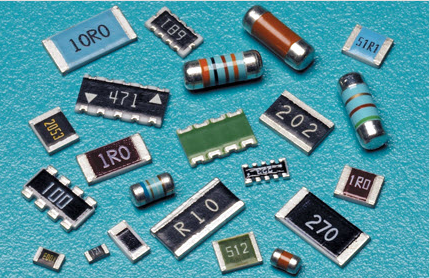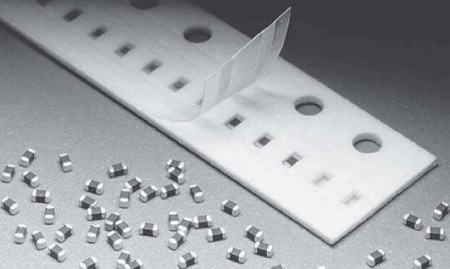Position:Home » Industry News
Developing Resistor Technology Getting Rid of RoHS
Writer:Microhm Page View:Date:2019-07-19
Lead has long been recognized as a serious environmental hazard. The Restriction of Hazardous Substances Directive 2002/95/EC (RoHS) legislated to remove metallic lead from electronic components. It should be noted though that there are certain exemptions to the RoHS directive – where, at the time of its implementation, no viable substitute could be found.
Among the areas where an exemption would prove to be warranted was in thick-film resistors, and to this day the incorporation of lead oxide compounds into their glass elements is still permitted. Though much more stable, and thus posing less of an immediate threat, there is still a risk of these toxic heavy metal compounds entering the surrounding environment over time, leaching into groundwater from landfill sites. Due to growing concerns about the huge quantities of e-waste now being amassed, there is renewed pressure to look at narrowing the scope of the existing exemptions and make regulatory guidelines more stringent.

The next review of the relevant RoHS exemption – 7(c)-I ‘Electrical & Electronic Components Containing Lead in a Glass or Ceramic Material’ – is scheduled for 2021, and during this review, the inclusion of lead oxides in thick-film resistors may be placed under considerable scrutiny. Removing the lead oxides from glass in thick-film materials is not that simple, and until now attempts to do so have had associated performance penalties. Commodity resistors where lead has been removed from the glass are already available and have been acceptable in certain less-demanding cases. However, these have not come close to attaining the benchmarks necessary to address higher-end applications.

New generation of green thick-film resistors are the development focus for Microhm Electronics. Through these green thick-film resistors, long-term RoHS compliance can be assured and reliance on exemptions eliminated. Furthermore, the inconvenience of OEMs having to undertake subsequent system redesign work is mitigated.
These compact resistors are extremely well optimized for deployment in modern, densely packed electronic circuitry – enabling elevated voltage levels to be sustained while avoiding the need to utilize multiple components, thereby saving board real estate and keeping the overall bill of materials in check. They are targeted at hybrid electric vehicles (HEVs), industrial automation, clinical medical and home healthcare applications, where they will serve in either high-voltage sensing or circuit protection functions. Though important in all forms of electronic design, the future-proofing aspect will be of particular value in a medical context, as using GHVC (green high-voltage chip) components will mean that not only redesign, but also long drawn-out requalification procedures can be avoided.
Among the areas where an exemption would prove to be warranted was in thick-film resistors, and to this day the incorporation of lead oxide compounds into their glass elements is still permitted. Though much more stable, and thus posing less of an immediate threat, there is still a risk of these toxic heavy metal compounds entering the surrounding environment over time, leaching into groundwater from landfill sites. Due to growing concerns about the huge quantities of e-waste now being amassed, there is renewed pressure to look at narrowing the scope of the existing exemptions and make regulatory guidelines more stringent.

The next review of the relevant RoHS exemption – 7(c)-I ‘Electrical & Electronic Components Containing Lead in a Glass or Ceramic Material’ – is scheduled for 2021, and during this review, the inclusion of lead oxides in thick-film resistors may be placed under considerable scrutiny. Removing the lead oxides from glass in thick-film materials is not that simple, and until now attempts to do so have had associated performance penalties. Commodity resistors where lead has been removed from the glass are already available and have been acceptable in certain less-demanding cases. However, these have not come close to attaining the benchmarks necessary to address higher-end applications.

New generation of green thick-film resistors are the development focus for Microhm Electronics. Through these green thick-film resistors, long-term RoHS compliance can be assured and reliance on exemptions eliminated. Furthermore, the inconvenience of OEMs having to undertake subsequent system redesign work is mitigated.
These compact resistors are extremely well optimized for deployment in modern, densely packed electronic circuitry – enabling elevated voltage levels to be sustained while avoiding the need to utilize multiple components, thereby saving board real estate and keeping the overall bill of materials in check. They are targeted at hybrid electric vehicles (HEVs), industrial automation, clinical medical and home healthcare applications, where they will serve in either high-voltage sensing or circuit protection functions. Though important in all forms of electronic design, the future-proofing aspect will be of particular value in a medical context, as using GHVC (green high-voltage chip) components will mean that not only redesign, but also long drawn-out requalification procedures can be avoided.
Keywords:thick-film r
Latest News
- Resistor's role in measuring and correcting LED,,,
- Single through-hole resistors' characteristics ,,,
- Why shunt resistors for current sense applicati,,,
- Metal-film resistors with small size, high resi,,,
- 36W High-Current Shunt Resistors MMS8420,,,
- 1W Surface Mount Resistor MPR1206,,,
- An Overview of Microhm Electronics' Resistor Pr,,,
- More anti-sulfur resistors used in harsh envir,,,
- Resistance changes with temperature,,,
- 140W TO247 High Power Heatsinkable Resistor,,,
- MMS5930 is ideal for current sensing in industr,,,
- Shunt resistors selection for engineers' design,,,
- Considerations for choosing precision resistors,,,
- Ceramic Encased Cement Resistors NWH Series for,,,
- Resistors for Passive Balancing in Battery-Pow,,,
Hot Articles
- Microhm will take part in 10th Automotive World,,,
- Thanks for Visiting Microhm's Booth E5-5706 in ,,,
- Resistors in Short Supply: Blame Cars,,,
- New lunch: High Power Precision Shunt Resistor,,,,
- How to Test a Resistor,,,
- Innovative Technology, Future Electric: Electri,,,
- What is Precision Resistors?,,,
- SMD Resistors Sizes and Packages,,,
- The Construction and Features of Metal Film Res,,,
- What is a TO-220 Resisor?,,,
- Hot Selling Products: Precision Shunt Resistors,,,
- How to Calculate the Equivalent Resistance Valu,,,
- What is a Fixed Resistor?,,,
- Resistors in LED Circuits,,,
- Resistors Types and Materials Overview,,,
Resistance applications
- Precision Resistors' Construction and TCR,,,
- The Four Important Functions of Alloy Resistors,,,
- Industrial Roberts Applied to Solar Photovoltai,,,
- Carbon Film Resistors' Features and Application,,,
- Why Zero-Ohm Resistors?,,,
- Shunt Resistor MMS8420 for High Current Stable ,,,
- Surface Mount Resistor's Size and Package ,,,
- The Measurement Accuracy of Automotive Shunt is,,,
- Difference Between High Precision Resistors and,,,
- Select the Right Resistor for Harmonic Filterin,,,
- Miniature future for passive electronic compone,,,
- Urbanization Development Bringing the Transform,,,
- Heater Blower Motor Resistor in Air Conditioner,,,
- BMS for New Energy Vehicle,,,
- The Main Application for High Precision and Low,,,
